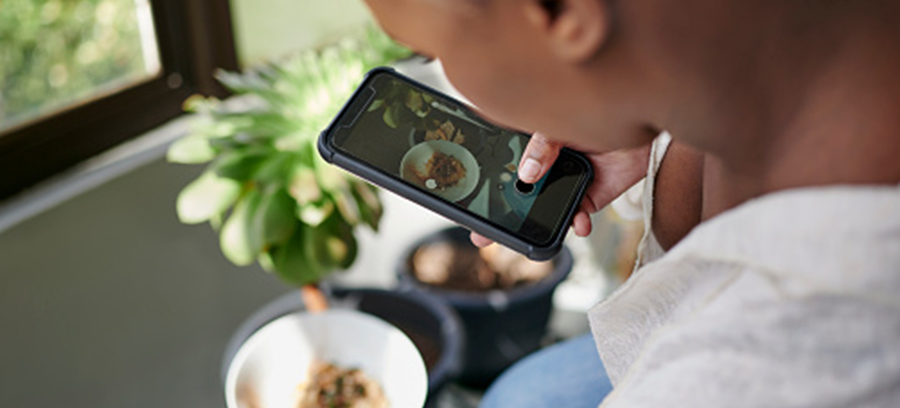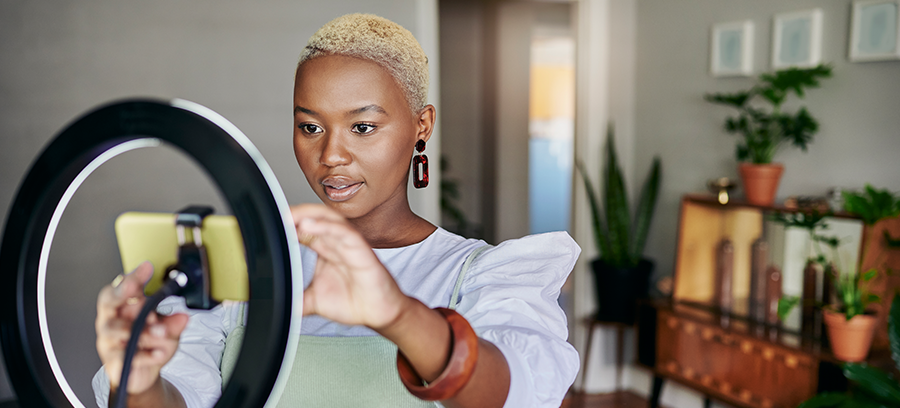Estimated reading time: 6 minutes
These days, influencer marketing is one of the most buzzworthy strategies in the marketing world. Partnering with influencers can be a great way to raise brand awareness, get your products and/or services in front of a new audience and drive real results for your small business.
But if you’re new to the world of influencer marketing, it can be hard to know where to start. How do you create an effective influencer strategy? How do you find and connect with small business influencers? And what’s the best way to drive real results with your influencer campaigns?
Let’s take a dive into all things influencer marketing — what it is, how it works and, most importantly, how to capitalise on it for your small business.
What is influencer marketing?
Influencer marketing is a social media marketing strategy that connects influential social media users with brands. Influencer marketing helps brands increase their awareness and reach through influencer endorsements, mentions and content placements.
When influencer marketing first gained traction, it was mostly limited to celebrities with millions of social media followers…which meant that brands needed a huge budget to take advantage. But today, brands are finding just as much success by engaging ‘micro-influencers’. Micro-influencers are social media users with smaller — but extremely engaged — audiences, generally 1,000–10,000 followers, though this can vary. This strategy is significantly more accessible and affordable, and has allowed small business owners to get into the influencer marketing game.
How does influencer marketing work?
In a brand/influencer relationship, the business will offer influencers compensation — whether that’s a per-post payment or free merchandise — in exchange for coverage on their social media channels. Influencer marketing uses social proof in order to drive results. Because the influencer has a certain level of trust and engagement with their audience, their followers are more likely to make a purchase or engage a business based on their recommendation.
So, what does influencer marketing look like in action? Let’s say you just opened a new fitness studio — and you want to get the word out in your community. First, you should identify any local influencers in the health and wellness space. Maybe there’s a personal trainer in your area with an engaged Instagram audience of die-hard fitness enthusiasts, or an up-and-coming activewear designer who just opened a boutique down the street. Reach out and see if they’d be willing to partner on creating content — and then offer them an incentive to create that content. This could be a complementary membership to your fitness studio, free merchandise or a cash payment every time they post about your business.
What are the benefits of influencer marketing for small businesses?
Using influencer marketing to promote your small business has a number of benefits.
- Influencer marketing is highly effective. Arguably the biggest benefit of influencer marketing for small businesses? It works. According to the Influencer Marketing Survey from Mediakix, in the US, influencer marketing is 11 times more effective than other digital media strategies — and while businesses make, on average, about $2 for every $1 they spend on Google AdWords, the earned media value for influencer marketing is an astounding $11.69 for every dollar spent.
- Influencer marketing allows you to leverage the trust the influencer has with their audience. In order for a customer to engage your business, they need to trust you. The beauty of influencer marketing is that the trust already exists between the influencer and their audience — which makes it more likely that their audience will then trust you.
- Targeting local influencers is affordable. If you want to get the most marketing bang for your buck, you’d be hard pressed to find a better strategy than influencer marketing. Not only does influencer marketing deliver a high ROI, but it also has a low barrier to entry; many local or micro-influencers are willing to create content in exchange for free products — and for the influencers that require cash compensation, their fees are generally more affordable than other marketing strategies (like paid digital ad campaigns).

How do you create an influencer strategy?
Influencer marketing can be a major win for your small business — but you need a solid strategy. Here’s how to get started.
1. Do your research.
You can’t develop an effective influencer marketing strategy if you don’t understand the space — so the very first part of building an effective influencer marketing strategy is doing your research. Here are some elements to research and consider before going all-in on a strategy.
- Platforms. You can move forward with influencer marketing on Facebook, Twitter, Instagram, TikTok…if it’s a social platform, chances are, there are influencers on it. So, before you start crafting your strategy, it’s important to identify which platforms you want to leverage.
- Local influencers. Before you put lots of time and energy into influencer marketing, you need to vet the idea — and make sure there are existing influencers that would make sense for your business. Do some research and make a list of a few people you want to reach out to. You should also make sure that you check out the kind of engagement these influencers are getting to avoid booking someone with (potentially) fake followers. Look for authentic comments on their posts to get a sense of their engagement.
- Competitors. If you have any competitors, it can be helpful to research what they’re doing with influencer marketing. While you never want to steal their ideas, getting a sense of what your competitors are doing in the space can help guide your strategy — and make sure that you come up with something new, different and interesting.
2. Outline your goals and set your metrics.
Once you’ve done your research on influencer marketing, decide what you want to get out of your strategy. So, outline your goals and define how you’re going to measure your progress in hitting those goals.
For example, do you want to increase your brand awareness? Then you might focus on targeting influencers with an audience of over 10,000 — and measure your progress in the number of views and impressions your campaign generates. Are you looking to drive more sales? Then you might set a revenue goal, give each of your influencers a unique discount code and track how many sales come in from your campaign.
3. Make a budget.
You’ve done your research. You know what your goals are for influencer marketing and you’ve decided how you’re going to measure those goals. Now, it’s time to talk numbers. Before you start implementing your influencer marketing strategy, you need to have a clear sense of your budget — so make sure to define how much you can (and are willing) to spend before you start connecting with influencers or moving forward with any campaigns. Knowing how much money you have to work with is key in deciding how many influencers you’ll reach out to and how you’ll compensate them.
If you’re working on a tight budget, don’t worry! Like we said earlier, influencer marketing can be a very affordable marketing strategy. Often, local influencers will be happy with a few free products or a complimentary service — especially if they’re a newer influencer.
VistaPrint Tip
Another way to leverage influencer marketing on a tight budget is to partner with other small businesses. Let’s say you’re promoting your new juice bar. You might reach out to local health food shops and ask them to give you an Instagram shout out — and then offer to do the same. This is a great way to get in front of each other’s audiences without spending any money.

How do you get influencers for a campaign?
Once you know what you want to do with your influencer marketing strategy — and you’ve researched the influencers you want to work with — it’s time to start reaching out and asking local influencers to work with you.
Here are a few tips and tricks you’ll want to keep in mind when targeting influencers (and convincing them to work with your business!).
- Show them you’re familiar with their platform. When it comes to influencer marketing, you want to have a clear understanding of the influencers you’re reaching out to. That includes what they’re about, what kind of things they’re posting about, why they’re a good fit for your brand and who their audience is — and you want that understanding to come across in your interactions with them. Before you reach out to any influencers, do your research and get familiar with their platform — and when you do reach out, be specific about why you want to partner with them, citing specific examples from their posts.
- Reach out in the right way. If you’re reaching out to a local influencer with a smaller following, try sending them a direct message asking to work together. But if the influencers you’re targeting have a slightly larger audience or have moved into ‘professional influencer’ territory, they may have information about how to reach out about brand partnerships somewhere in their profile. If they do, make sure to follow their directions on how to reach out.
- Share your ideas about how to work together. When you reach out to an influencer, you want to have clear ideas of how you see yourselves working together. For example, do you want them to host a giveaway of your products? Do you want them to do a series of photos or videos at your shop? Come prepared with ideas.
- But be willing to listen to their ideas. Influencers know their audiences better than you do…so when it comes to collaborating, listen to their ideas. You might think a giveaway is the way to go — but if they know giveaways tend to fall flat with their audience, they may have an alternative idea that will drive better results.
- Make it easy. Once an influencer agrees to work with you, you want to make the experience as easy as possible for them. Be responsive, be helpful and give them everything they need to be successful — whether that’s product, company information, copy suggestions or visual assets (like your logo or other branding images).
VistaPrint Tip
Want to make things super easy for your influencers? Give them templates for their posts! Use VistaCreate to design branded social media templates — and then share those templates with your influencers.
Adapt and adjust your influencer marketing strategy as necessary
Once you’ve partnered with small business influencers and they’re creating content, it’s time to watch your strategy come to life.
Keep an eye on each influencer’s content and how it’s performing — and then adapt and adjust your strategy accordingly. For example, if you find that one influencer’s audience isn’t engaging with your content, you might choose not to work with that influencer on future campaigns. And if another is driving significant engagement, you may want to put more resources into that partnership moving forward. Remember to track your success along the way and make changes as necessary to optimise your strategy.